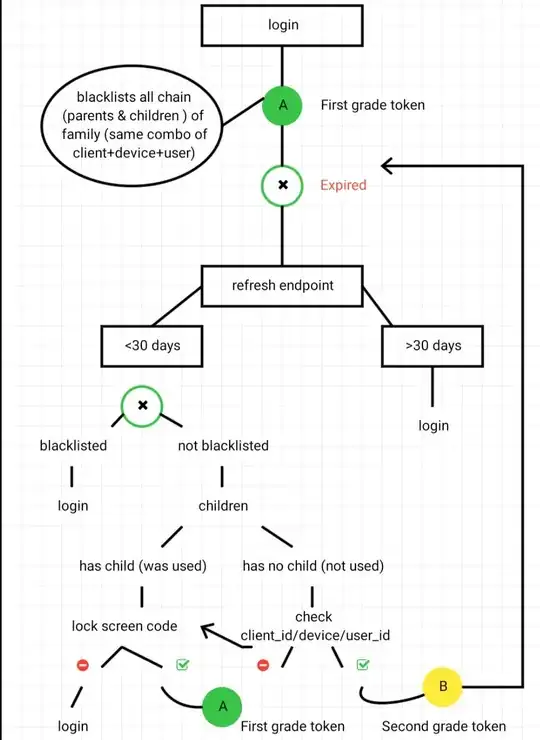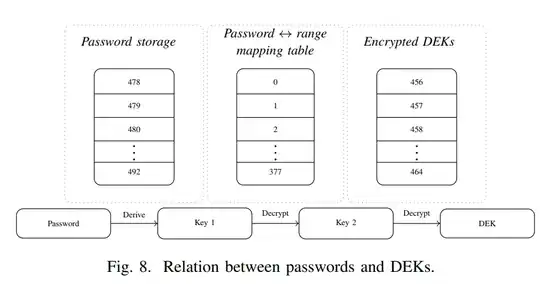I am using a Samsung Evo 960 NVME SSD. I have encrypted the SSD using its built in hardware encryption features, which follow the tcg opal standard. If I understood correctly, the disk encrypts all data using AES-256. The key for this encryption is called the DEK (disk-encryption-key). The DEK is then encrypted again, using a password provided by me.
An attacker with access to the disk could theoretically extract the (encrypted) DEK from the drive. I would like to estimate how long it would take to crack the encryption of the DEK (so basically to find out my password). Therefore, I would like to know how the DEK is encrypted using my password, so I can estimate how many passwords one could try per second on commodity hardware.
Edit from comment: The question is: How is this key (the DEK) encrypted/generated? Is it a 256-bit hash of the password? If so, which hash method is used?


